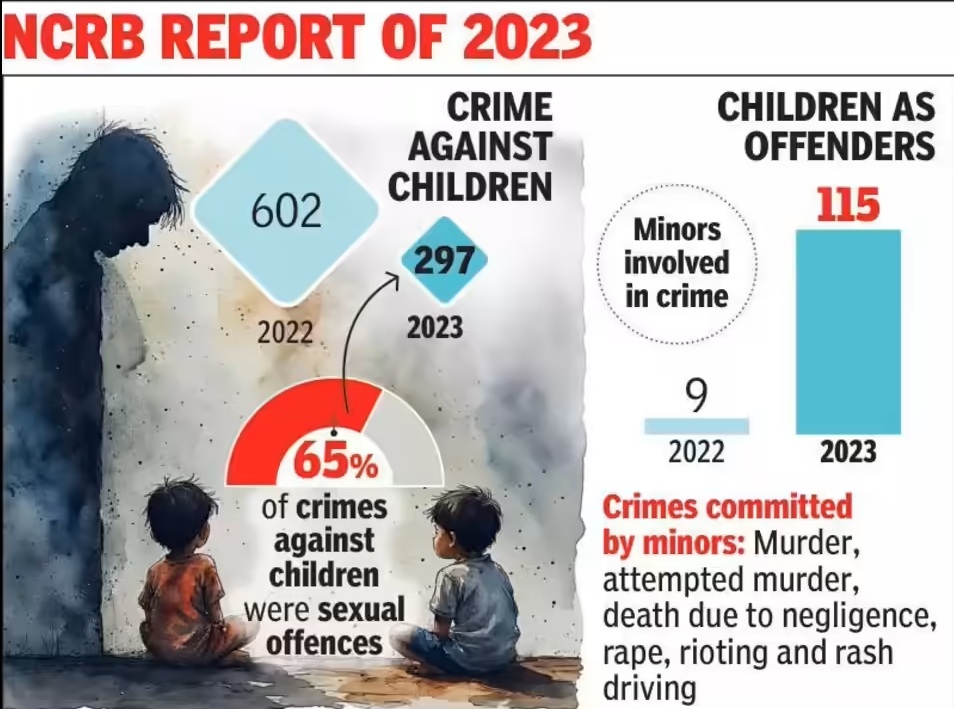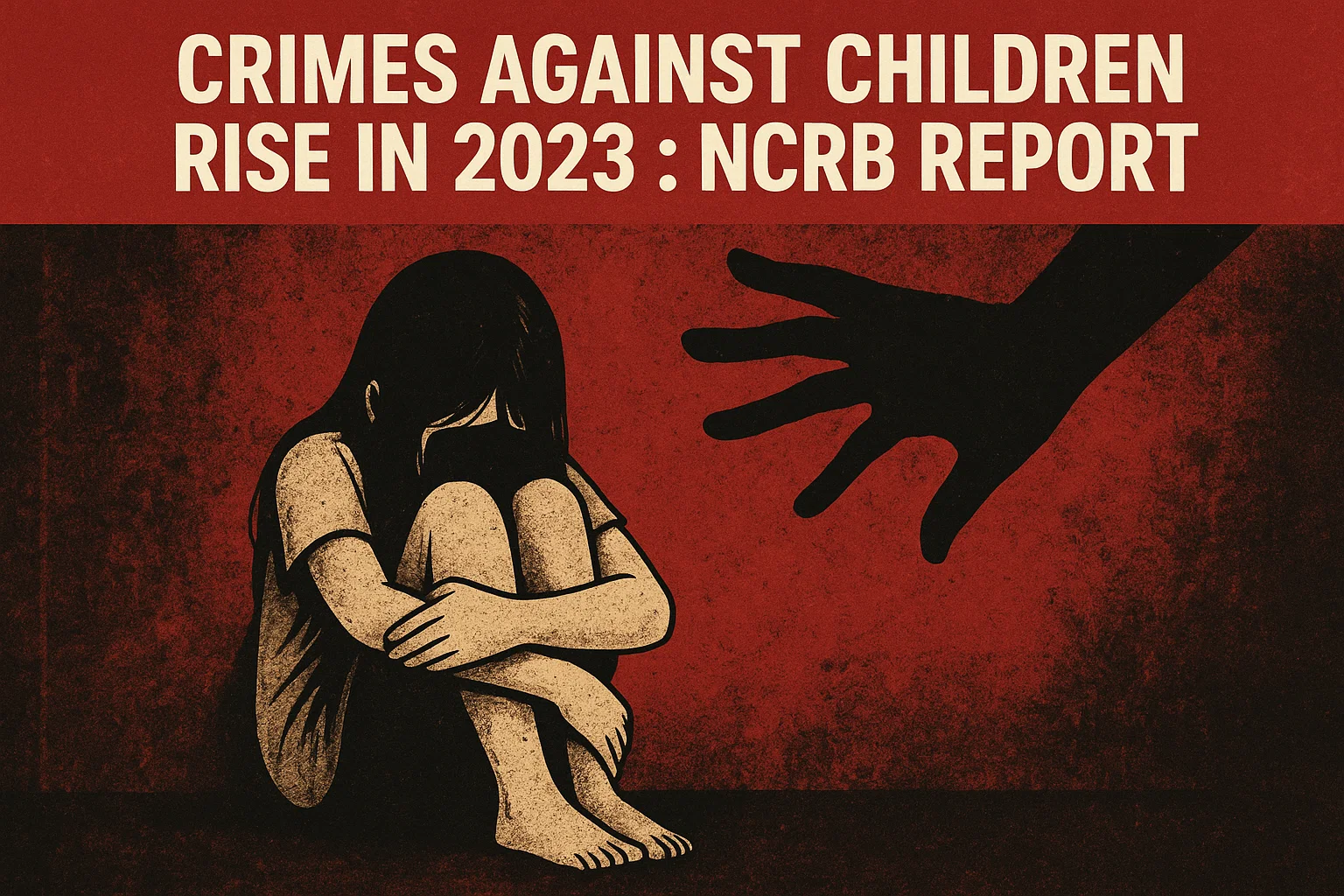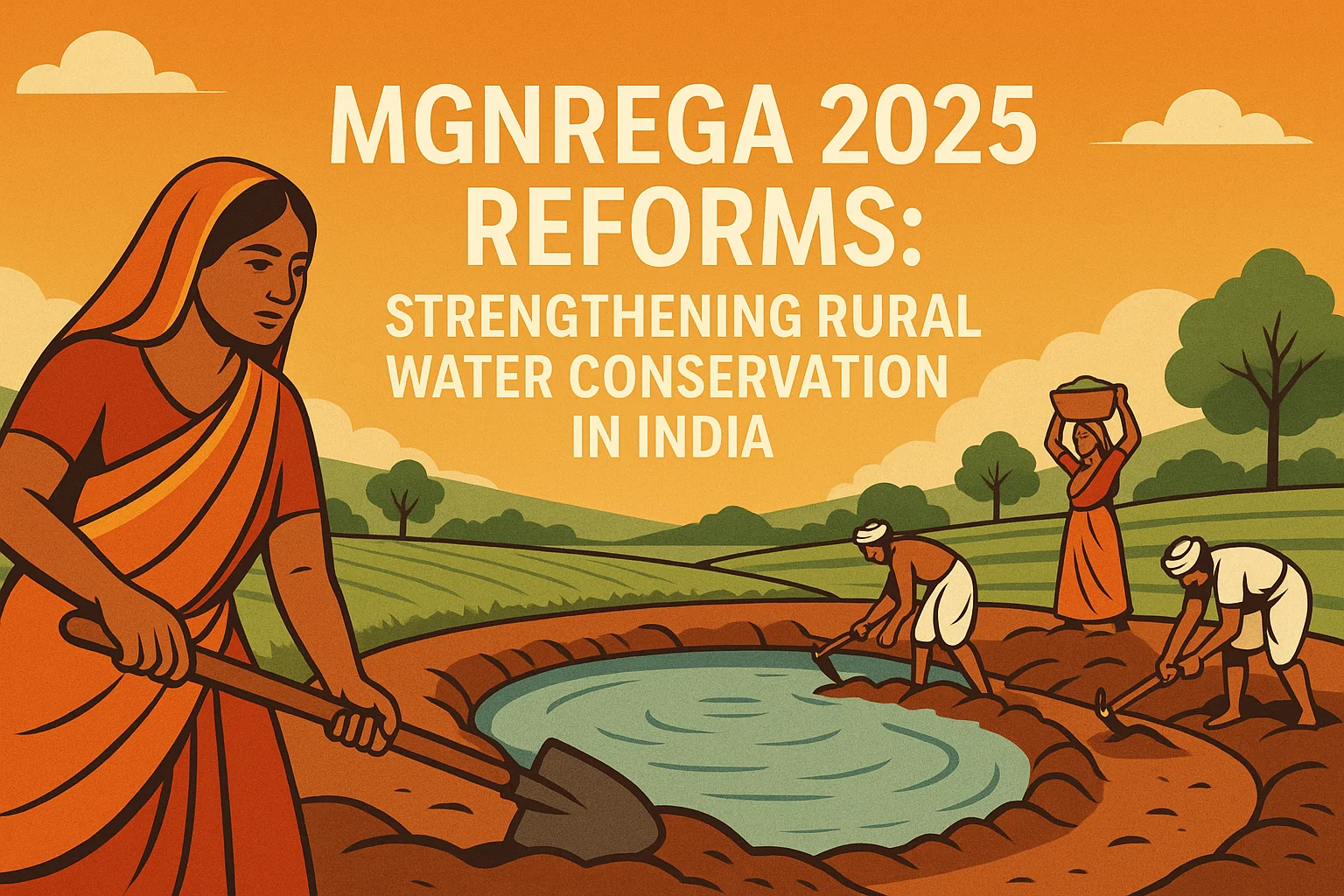Crimes Against Children Rise in 2023 : NCRB Report
India’s NCRB 2023 report shows a 10-fold rise in crimes against children since 2005. Learn about key trends, reasons for increased reporting, and how awareness and community initiatives can strengthen child safety and justice.
Context
The National Crime Records Bureau (NCRB) report, Crime in India 2023, reveals a worrying yet complex trend — crimes against children have increased tenfold since 2005. While the numbers indicate a rising incidence, they also reflect improved reporting, awareness, and societal responsiveness to child protection issues.

What Does the NCRB Say About Crimes Against Children?
According to the NCRB Crime in India 2023 report, India registered nearly 1.8 lakh cases of crimes against children in 2023, marking a 9% increase from 2022. This means that, on average, a crime against a child occurs every three minutes across the country.
The rate of cognisable crimes rose from 36 to 39 per lakh children, indicating both higher incidence and improved legal action. The two largest categories were:
-
Kidnapping and abduction (45%), often linked to child trafficking, forced labour, or illegal adoption.
-
Sexual offences under the Protection of Children from Sexual Offences (POCSO) Act (38%), signalling the continuing vulnerability of children to abuse.
The data further reveals deeply concerning patterns:
-
98% of sexual offence victims were girls.
-
96% of offenders were known to the victims, including family members, neighbours, teachers, or online acquaintances.
This demonstrates that crimes against children are often perpetrated within trusted circles, underscoring the need for stronger family, school, and community safeguards.
The tenfold increase since 2005 reflects both the actual rise in offences and the expansion of reporting mechanisms. Experts project that the number of recorded cases could cross 2.5 lakh in the coming years if awareness and enforcement continue to improve.
What Are the Reasons Behind Increased Crime Reporting?
Experts, including those from Child Rights and You (CRY), emphasise that higher numbers do not automatically suggest that children are less safe today. Rather, they may indicate a society that is finally beginning to confront long-suppressed realities. Several factors have contributed to this rise in reporting:
-
Increased Public Awareness: Widespread campaigns and education initiatives have improved knowledge of child rights and laws such as the POCSO Act and relevant sections of the Indian Penal Code (IPC 354, 376, 509).
-
Enhanced Trust in Institutions: More people now have faith in law enforcement agencies, child protection authorities, and helplines such as Childline 1098, encouraging victims and families to come forward.
-
Improved Legal and Digital Access: The introduction of online complaint systems and mobile apps has simplified the process of lodging cases, especially in urban and semi-urban areas.
-
Post-2012 Trend Shift: After the 2012–13 Nirbhaya case, public discourse around sexual violence intensified, leading to legislative reform and greater reporting.
-
COVID-19 Disruptions: A temporary dip in reported cases during 2019–20 reflected reduced mobility and limited access to reporting mechanisms. However, post-pandemic data show a sharp resurgence, indicating renewed vigilance and awareness.
In short, rising numbers partly represent societal awakening rather than merely worsening conditions.
How Can Safety Be Strengthened?
Strengthening child protection requires both institutional vigilance and community participation.
-
Case Example – Operation Smile (Kerala): This initiative focuses on proactive child rescue, counselling, and rehabilitation, highlighting how collaboration between community and state agencies can yield tangible safety outcomes.
Reports from the NCRB, UNICEF India, and the Economic Survey 2023–24 recommend several critical steps:
-
Community Engagement: Conducting awareness drives and capacity-building programmes to break the culture of silence around child abuse.
-
Institutional Strengthening: Expanding fast-track POCSO courts, improving investigative capacity, and forming school-based child protection committees.
-
Targeted Protection for Girls: Given that girls constitute the overwhelming majority of victims, gender-responsive safety measures — such as digital monitoring, safe school infrastructure, and awareness education — are essential.
As child rights advocates remind us, “Child abuse casts a shadow the length of a lifetime.” Protecting children is not only about ensuring their survival — it is about guaranteeing a future generation that is healthy, confident, and free from trauma.
Subscribe to our Youtube Channel for more Valuable Content – TheStudyias
Download the App to Subscribe to our Courses – Thestudyias
The Source’s Authority and Ownership of the Article is Claimed By THE STUDY IAS BY MANIKANT SINGH





